Transparent Roofing In Stadiums: A Clear Win
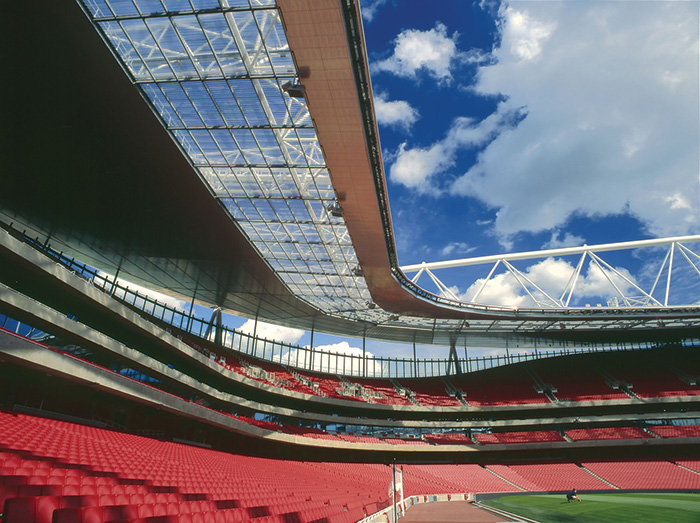
Maximising pitch health, improving spectator experience and controlling internal atmosphere are crucial considerations for the design and upkeep of a stadium. However, these are all affected by the condition of the roof and the materials used to construct it. Here, Brett Martin’s Regional Business Manager Paul Priestley discusses the benefits of polycarbonate roofing and why maintaining or replacing old roof panels should be a priority for every facilities manager.
Designing, constructing and maintaining a stadium roof is a significant challenge. Whether a roof design uses a cantilevered roof, a system of supported trusses or a tensile structure, a roof must work to shelter spectators and enhance the internal atmosphere without compromising pitch health or obstructing the view of those in the stands.
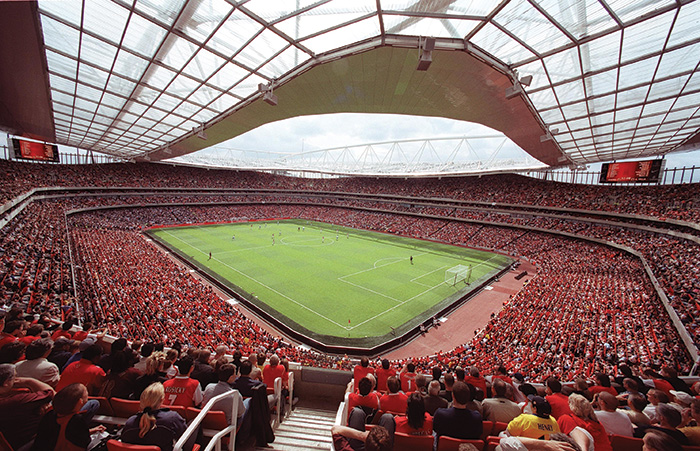
Weather protection is needed in order to shelter spectators from the rain and the sun. With anyone sat within an angle of 15 degrees from the drip line of the roof likely to get wet, creating a roof that extends beyond the stands can help maximise shelter. Increasing the size of the roof also benefits internal atmosphere, as it traps sound making the stadium feel louder and reducing noise pollution for neighbouring homes and businesses.
However, an opaque roof can have adverse effects for both the venue and the crowd. A roof that blocks sunlight and casts shadow on to the pitch will make maintaining a healthy grass surface difficult. Extensive shadows can also make the action hard to follow for spectators and cause issues when filming events. An opaque roof can also make stands feel claustrophobic and dark, and take away from the feeling of being outside.
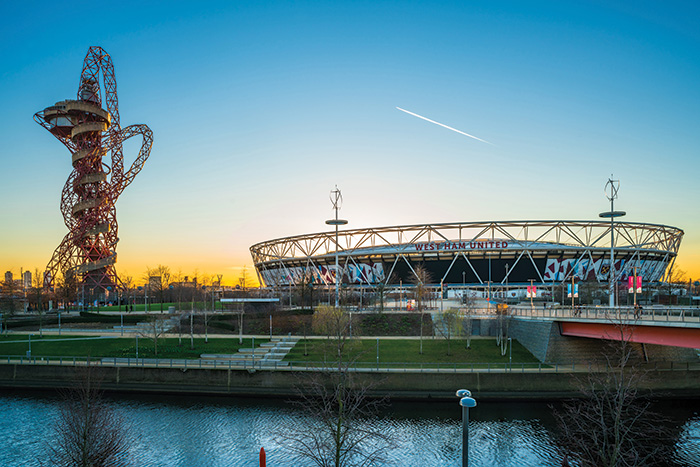
As a result, it is advisable to specify translucent polycarbonate roofing where possible, in order reap the protective and atmospheric benefits of a roof without compromising the health of the pitch. Polycarbonate is widely seen as the best option because it is up to 200 times stronger than glass at a fraction of the weight; this makes it an ideal material for projects with very large‑span roofs like the London Stadium, which has one of the largest tensile roofs in the world. What’s more, advanced polycarbonate technology allows for 90% light transmission whilst blocking 98% of harmful UV rays, if the right products are specified. This enables spectators to enjoy the experience of sitting outside without the risk of over exposure at long events.
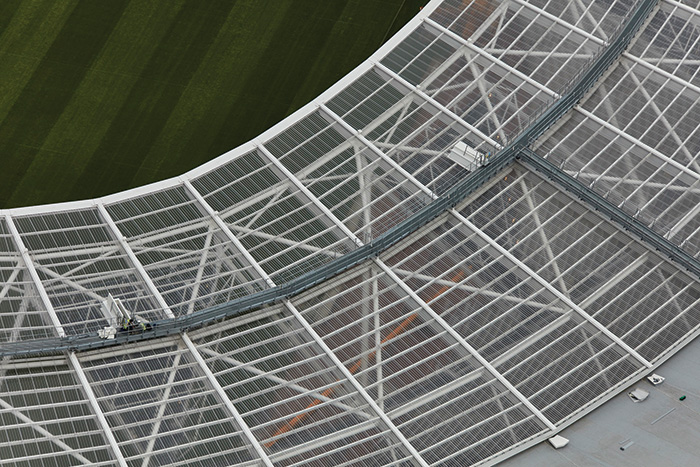
Polycarbonate also provides spectators with increased visibility, creating a lighter and less claustrophobic environment, such as in the south stand at the Etihad stadium. This can reduce reliance on artificial lighting for the stands and positively impact the site’s energy bill.
Choosing the right supplier is also crucial to ensuring you can maximise the longevity of a roof and select a product that provides what you need. For example, defects in the manufacturing process could compromise the rigidity and strength capabilities that make polycarbonate so well suited to stadium applications. For restoration and refurbishment projects, it is also advisable to look for manufacturers who offer and array of corrugated profiles or can match existing profiles; this will simplify installation and facilitate improved water tightness.
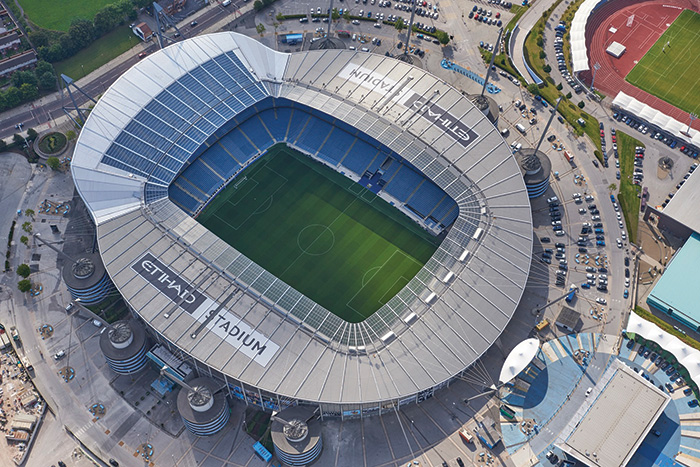
Consequently, there are numerous benefits that can be attained by installing a transparent roof in a stadium but in order to capitalise on these, careful consideration of the product specification must be made, followed by adequate and regular maintenance in order to provide longevity for your roofing system and provide spectators with the best experience.
Click the article to enlarge it.












































